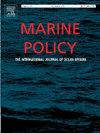为南非沿海环境的空间规划和管理试行具有重要文化意义的地区框架
IF 3.7
2区 社会学
Q2 ENVIRONMENTAL STUDIES
引用次数: 0
摘要
识别和绘制具有重要文化意义的地区是海洋空间规划(MSP)以及设计和实施保护区或其他基于地点的管理措施的关键投入。尽管人们认识到沿海和海洋文化价值的重要性,但它们往往被遗漏在MSP过程和管理措施中,导致不信任、有偏见的权衡和不公平的管理结果,破坏了文化生态系统效益、生态系统服务和依赖它们的人们。在沿海和海洋空间规划和管理中考虑到文化遗产的非洲例子很少。本研究在南非的背景下试点了现有的文化重要区域(CSA)框架,以展示在新环境下的概念证明,并有助于在MSP和沿海管理中识别和包括文化遗产和价值方面取得进展。根据文献、文学和专业知识,我们确定了八类CSA。这些包括文化遗产的有形和无形方面,包括标志性海景、传统渔场、具有精神和仪式重要性的地点以及口头传统。我们根据五个既定的CSA标准,在全国范围内评估了每个类别的遗址范围(4 - 14个)的相对重要性:1)文化独特性,2)广泛的文化依赖,3)传统程度,4)对社会生态系统恢复力的重要性,以及5)戏剧性文化变化的影响。这有助于初步绘制60个CSA的国家尺度地图。挑战包括全国范围的参与、概念上的困难和术语、非物质遗产的空间化、规模和实施方面的挑战。对关键的促成因素和建议进行了提炼和讨论。本文章由计算机程序翻译,如有差异,请以英文原文为准。
Piloting a culturally significant areas framework for spatial planning and management in the coastal environment of South Africa
The identification and mapping of culturally significant areas are key inputs to Marine Spatial Planning (MSP) and the design and implementation of protected and conserved areas or other place-based management measures. Despite the recognised importance of coastal and marine cultural values, they are often missing from MSP processes and management measures, leading to mistrust, biased trade-offs, and inequitable management outcomes, undermining cultural ecosystem benefits, ecosystem services and the people who rely upon them. There are few African examples where cultural heritage has been considered in coastal and marine spatial planning and management. This study pilots an existing Culturally Significant Areas (CSA) framework in a South African context to demonstrate proof of concept in a new setting and contributes to progress in identifying and including cultural heritage and values in MSP and coastal management. We identified eight categories of CSA, drawing from literature, orature and expert knowledge. These included tangible and intangible aspects of cultural heritage, including iconic seascapes, traditional fishing grounds, sites of spiritual and ceremonial importance and oral tradition. We assessed a range of sites (4−14) per category for relative importance at a national scale based on five established CSA criteria: 1) cultural uniqueness, 2) broad cultural reliance, 3) degree of tradition, 4) importance to the resilience of the social-ecological system, and 5) impact of dramatic cultural change. This facilitated national-scale mapping of a preliminary set of 60 CSA. Challenges included nation-wide participation, conceptual difficulties and terminology, spatialisation of intangible heritage, scale and implementation challenges. Key enabling factors and recommendations are distilled and discussed.
求助全文
通过发布文献求助,成功后即可免费获取论文全文。
去求助
来源期刊

Marine Policy
Multiple-
CiteScore
7.60
自引率
13.20%
发文量
428
期刊介绍:
Marine Policy is the leading journal of ocean policy studies. It offers researchers, analysts and policy makers a unique combination of analyses in the principal social science disciplines relevant to the formulation of marine policy. Major articles are contributed by specialists in marine affairs, including marine economists and marine resource managers, political scientists, marine scientists, international lawyers, geographers and anthropologists. Drawing on their expertise and research, the journal covers: international, regional and national marine policies; institutional arrangements for the management and regulation of marine activities, including fisheries and shipping; conflict resolution; marine pollution and environment; conservation and use of marine resources. Regular features of Marine Policy include research reports, conference reports and reports on current developments to keep readers up-to-date with the latest developments and research in ocean affairs.
 求助内容:
求助内容: 应助结果提醒方式:
应助结果提醒方式:


